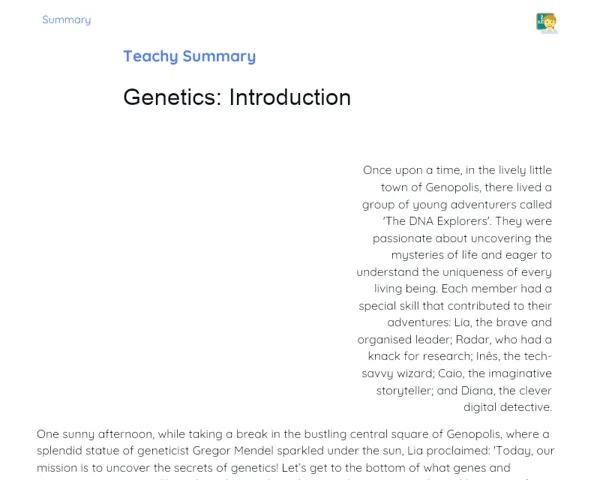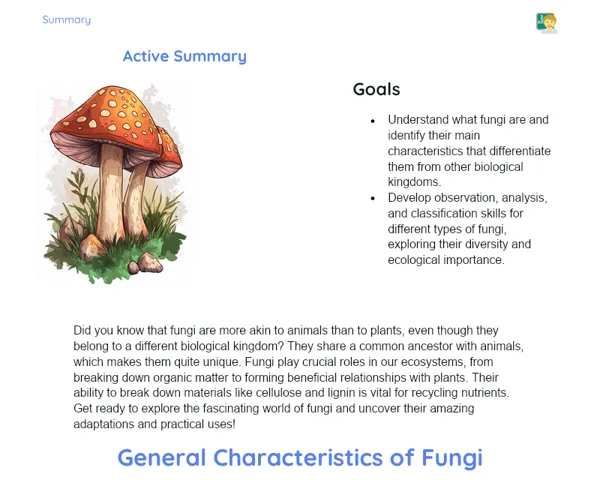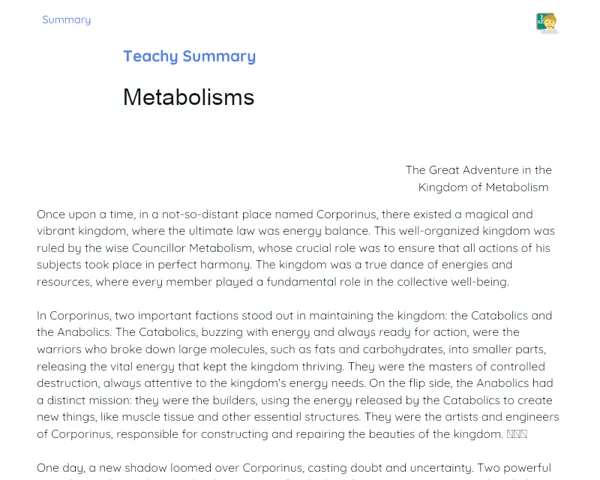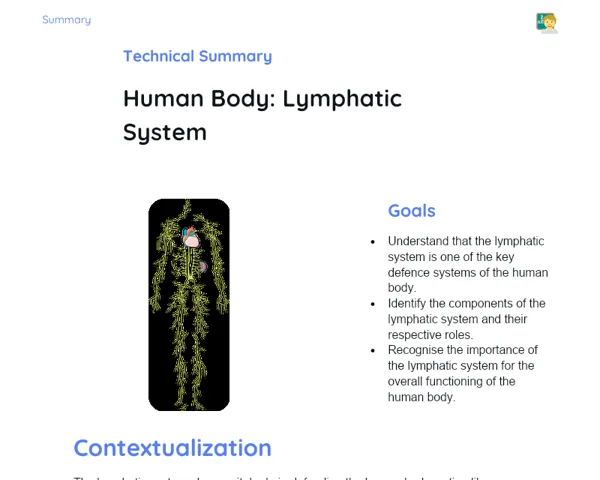Summary Tradisional | Protista Kingdom: Protozoa and Algae
Contextualization
The Protist Kingdom is one of the biological kingdoms that includes eukaryotic organisms, which have a defined nucleus. Protists are a varied group of organisms, ranging from unicellular to simpler multicellular forms, and they don't fit neatly into other kingdoms like animals, plants, or fungi. Two major groups within this kingdom include protozoa and algae. Protozoa are unicellular organisms usually found in water or damp environments, whereas algae can be either unicellular or multicellular and thrive mostly in aquatic settings, performing photosynthesis. It's essential to study these organisms to grasp their ecological roles, their contribution to biodiversity, and their impacts on human health.
Protozoa showcase a significant range of forms and functions. They can be free-living or parasitic, fulfilling vital roles in aquatic ecosystems and food webs, and are also behind serious diseases, such as malaria, Chagas disease, and leishmaniasis. Algae, on the other hand, are key players in producing oxygen and form the foundation of the aquatic food chain. They also hold considerable economic value and are used in food production, cosmetics, pharmaceuticals, and as a potential source of biofuels. Recognizing the diversity and importance of protozoa and algae allows us to appreciate the complexity and interconnectedness of natural ecosystems.
To Remember!
Protozoa
Protozoa are unicellular, eukaryotic organisms found in wet or aquatic environments. They can live freely or be parasitic. These organisms are renowned for their diverse forms and functions, enabling them to fit into various ecological niches. Protozoa play crucial roles in aquatic ecosystems, such as managing bacterial populations and recycling nutrients. Some protozoa are also known as human pathogens and cause serious diseases.
Protozoa are divided into four main categories: rhizopods, flagellates, ciliates, and sporozoans. Rhizopods, like amoebas, use pseudopodia for movement and feeding. Flagellates, such as Trypanosoma, rely on flagella for movement. Ciliates, including paramecia, have cilia that assist in movement and feeding. Lastly, sporozoans like Plasmodium are typically obligate parasites and exhibit complex life cycles.
The diversity among protozoa is evident in their feeding and reproductive behaviours. They may be heterotrophic, consuming bacteria, algae, or other protozoa, or mixotrophic, combining photosynthesis with uptake of organic matter. Reproduction can occur through binary fission, budding, or, in some cases, sexually, which promotes genetic diversity and adaptation to varying environments.
-
Unicellular, eukaryotic organisms.
-
Can be free-living or parasitic.
-
Classified into rhizopods, flagellates, ciliates, and sporozoans.
Diseases Caused by Protozoa
Protozoa are the culprits behind several severe illnesses affecting millions of individuals globally. A well-known example is malaria, which is caused by the protozoan Plasmodium and transmitted through the bite of the Anopheles mosquito. Malaria presents with symptoms like fever, chills, and anemia, and it can be deadly if not treated correctly. Preventative measures include using mosquito nets and repellents, while treatment involves antimalarial drugs.
Chagas disease is another major concern, caused by Trypanosoma cruzi and transmitted by the kissing bug. Initial symptoms feature fever and swelling at the bite site, but if left untreated, the disease may lead to significant heart and digestive complications. Prevention strategies focus on improving housing and controlling the vector, while treatment requires specific medications.
Leishmaniasis, caused by protozoa of the Leishmania genus, is transmitted through the sand fly bite. Symptoms range from skin lesions to fever and enlargement of organs like the liver and spleen. Preventative measures include using repellents and controlling insect populations, with treatment using specific medications. These diseases underscore the importance of understanding protozoa for developing effective prevention and treatment strategies.
-
Malaria: caused by Plasmodium, transmitted by the Anopheles mosquito.
-
Chagas disease: caused by Trypanosoma cruzi, transmitted by the kissing bug.
-
Leishmaniasis: caused by protozoa of the Leishmania genus, transmitted by the bite of the sand fly.
Algae
Algae are eukaryotic organisms that can exist as unicellular or multicellular forms. They undertake photosynthesis, converting sunlight, carbon dioxide, and water into oxygen and glucose, and are mainly found in aquatic environments. Algae are crucial for oxygen production, significantly affecting our planet's atmosphere and supporting life in aquatic ecosystems.
There are several types of algae, classified according to their pigments, cellular structure, and life cycle. Green algae (Chlorophyta) are invaluable in both freshwater and saltwater environments and are vital for oxygen production. Brown algae (Phaeophyceae), like kelps, dominate marine environments and are important as habitat and food sources for many species. Red algae (Rhodophyta) are particularly recognized for their use in producing agar and carrageenan, which are key components in various food products and industrial uses.
On top of their ecological roles, algae also have considerable economic significance. They are harnessed in food production as dietary supplements and culinary ingredients. In the cosmetics industry, algae's moisturizing and antioxidant properties are highly valued, featuring prominently in creams, lotions, and skincare products. Moreover, compounds derived from algae show promise in pharmaceuticals. Recently, algae have also been examined as a sustainable source of biofuels, providing an eco-friendly alternative to fossil fuels.
-
Eukaryotic organisms that perform photosynthesis.
-
Classification: green, brown, and red algae.
-
Significant ecological and economic importance.
Importance of Algae
Algae are essential to aquatic ecosystems, being responsible for a significant portion of the planet's oxygen production. They underpin the aquatic food chain, supporting a diverse array of organisms, from tiny invertebrates to large marine mammals. The photosynthesis performed by algae helps to absorb carbon dioxide from the atmosphere, contributing to mitigating climate change.
Beyond their ecological importance, algae have a notable impact on the economy. They are utilized in food production, with substances like agar and alginates acting as thickeners and stabilizers in an array of food items. In cosmetics, algae are prized for their moisturizing, antioxidant, and anti-inflammatory qualities, making them popular in various skincare products.
In pharmaceuticals, compounds derived from algae exhibit therapeutic potential, including antiviral, antibacterial, and anti-cancer properties. Furthermore, algae are being investigated as a viable source of biofuels. Producing biofuels from algae offers a sustainable alternative to fossil fuels, potentially reducing greenhouse gas emissions and our reliance on non-renewable resources.
-
Oxygen production and the foundation of the aquatic food chain.
-
Used in food, cosmetics, and pharmaceuticals.
-
Potential as a sustainable biofuel source.
Key Terms
-
Protist Kingdom: A group of eukaryotic organisms that don’t fit into other biological kingdoms.
-
Protozoa: Unicellular and eukaryotic organisms, typically found in wet or aquatic environments.
-
Algae: Eukaryotic organisms that can be unicellular or multicellular and perform photosynthesis.
-
Malaria: A disease caused by the protozoan Plasmodium, transmitted by the bite of the Anopheles mosquito.
-
Chagas disease: An illness caused by Trypanosoma cruzi, transmitted by the kissing bug.
-
Leishmaniasis: A disease caused by protozoa of the Leishmania genus, transmitted by the bite of the sand fly.
-
Photosynthesis: The process by which algae and other plants convert carbon dioxide and water into oxygen and glucose using sunlight.
-
Biofuels: Fuels produced from organic matter, like algae, that provide a sustainable alternative to fossil fuels.
Important Conclusions
In this lesson, we delved into the Protist Kingdom, with a focus on protozoa and algae. Protozoa are unicellular eukaryotic organisms that thrive in aquatic or damp environments, playing critical roles in ecosystems while also being linked to serious diseases like malaria, Chagas disease, and leishmaniasis. We explored their classifications into rhizopods, flagellates, ciliates, and sporozoans, appreciating the significance of studying them to devise strategies for disease prevention and treatment.
Algae, on the other hand, are eukaryotic organisms that perform photosynthesis and are predominantly found in aquatic environments. Classifying into green, brown, and red algae, they are crucial for oxygen generation and serve as a foundational element of the aquatic food chain. They also hold considerable economic significance, being integral to food production, cosmetics, pharmaceuticals, and biofuels.
Understanding the roles of protozoa and algae is vital not just for biology, but also for public health and economic sectors. We encourage learners to continue investigating these topics to deepen their understanding of natural ecosystems' interdependence and the practical applications of their knowledge across various fields.
Study Tips
-
Review the lesson slides and notes to cement your comprehension of protozoa and algae.
-
Watch educational videos and documentaries showcasing the lives of protozoa and algae in their natural settings.
-
Read up on scientific articles and supplementary materials focusing on diseases caused by protozoa and the economic applications of algae.



